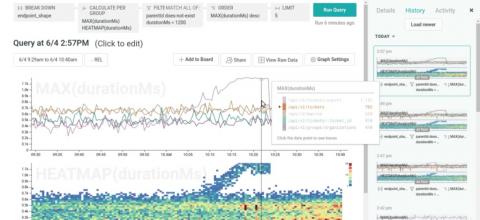Operations | Monitoring | ITSM | DevOps | Cloud
%term
Kubernetes, Data Science, and Machine Learning
The Importance of Application Decomposition in App Performance Testing
DevOps is changing the way companies develop and maintain software. By embedding operations engineers into software development teams, companies are reducing the average number of days from code completion to live production and eliminating wait time and rework, among other benefits. But as I pointed out in my previous post “Performance Testing in a DevOps World” performance testing remains the weakest link in the process.
Crash Course to Monitoring Kubernetes: The K8s Anatomy
It’s no secret that Kubernetes is the leader when it comes to container orchestration platforms. Since its 2014 release, the open source project has taken the world by storm and become one of the biggest success stories in the open source community.
An Azure Deployment Guide
Picking the right tools to handle the deployment will depend on your environment. Since there are so many ways to deploy to Azure services, we won't be able to get into the weeds, but I will cover enough so that you can hopefully find the right deployment solution for you.
AppDynamics Announces New European Software-as-a-Service Offering, Fueling Application and Business Monitoring Adoption Throughout Europe
SAN FRANCISCO – June 5, 2018–AppDynamics, a Cisco company and the leader in application intelligence, today announced its new European Software-as-a-Service (SaaS) offering, built on the Amazon Web Services (AWS) EU (Frankfurt) Region. Now, European enterprises can accelerate their digital transformations with AppDynamics and AWS with full confidence and control of their monitoring data.
AppDynamics Cloud Arrives in Europe
With the new privacy law updates in the form of the EU General Data Protection Regulation (GDPR), data privacy has become a hot topic. AppDynamics SaaS customers can be assured that AppDynamics and Cisco have also been preparing for GDPR readiness to help our customers with this new regulation.
AppDynamics Enhances Pivotal Cloud Foundry Performance Monitoring with New Infrastructure View
We’ve significantly expanded our Pivotal Cloud Foundry (PCF) performance monitoring capabilities, adding an intuitive dashboard, new metrics, and advanced capabilities to deliver powerful insights into your PCF applications.
Get deeper insights with Honeycomb Tracing
We’re excited to introduce Honeycomb Tracing! Now, you can both: Visualize individual traces to deeply understand request execution, and Break down, filter, and aggregate trace data to uncover patterns, find outliers, and understand historical trends.








